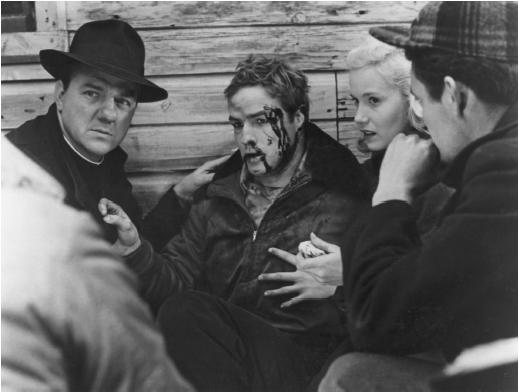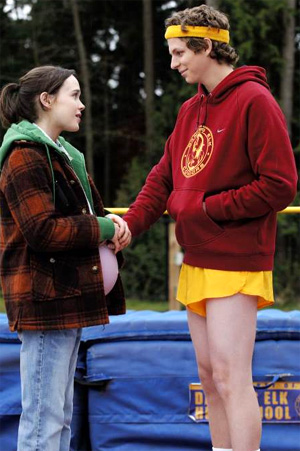
In the film Pulp Fiction, Quentin Tarantino creates a gruesome fusion of the lives of two hit men, a boxer, a couple who robs restaurants and a gangster’s wife that all share the common thread of “violence and redemption.” The story takes place in Los Angeles starts out with a middle-aged couple having breakfast and plotting a robbery in that very restaurant. Throughout the film, several other stories are taking place, and in the last few scenes all seem to fit together. This film is the winner of an Oscar for best screenplay and has been critically acclaimed for its creativity for the use of character development, camera angles and sound.
The character development in this film thickened with each scene, which made each scene exciting and unexpected. The film begins with a couple plotting to rob a restaurant, as they get up to rob the place, they shot abruptly ends and moves to two hit men, non-chalantly discussing McDonalds around the world, while going to kill four men for not paying Marsellus. Marsellus is first introduced while he is talking to Butch (Bruce Willis) , the boxer, in this shot his face is not exposed and his deep voice portrays power and intimidation. As the story develops Marsellus is the one common factor that is in everyone’s story. As Tarantino develops the character of two hit men who go on a wild goose chase to give Mersellus a case full of gold, he is also intricatly developing Butch’s character. Butch, a retiring fighter, is trying to escape from Marsellus’ power with his foreign girlfriend, yet gets caught in the drama, finally after killer two people to save Marsellus’ life, Marsellus is “cool” with Butch. In this film as one story ends, another begins. For instance after the two hit men, Vincent (John Travolta) and Jules (Samuel L. Jackson) , Vincent takes Marsellus’ wife, Mia (Uma Therman) out, on his request. While they dine at an Elvis dinner, she overdoses on cocaine, adding yet another aspect to these characters. Throughout this film as the characters are being defined they all seem to want revenge and a money, and the one sure way to achieve those goals are violence.
Camera angles also greatly contributed to this film, by giving a dramatic tone to moments as well as leaving the viewer wondering about certain characters. For instance in the scene where Mia (Marsellus’ wife) and Vincent are at dinner, they are always in separate shots, giving the effect of separation, that they are together, but not really together. Close ups were also used often to create a dramatic effect. For example when Butch was on the look out for Marsellus’ men, but was entering his apartment, the camera went close up to the key going into the lock, making it seem suspenseful because you couldn’t see what else was going on in the scene.
The element of sound used in the film created a mysterious tone, as well as kept you on the edge of your seat. For example in the scene where Butch is talking to Marsellus, the camera is only on Butch, yet Marsellus is the only one talking. This creates a sense of mystery and power to Marsellus’ voice. Also Tarantino chose to tie in music in the scene where Vincent and Jules are driving to kill four people, giving it an up beat tone and an attitude that killing, and violence is just another list of things to do during the day.
It is impossible to overlook the role violence and revenge has in this movie, yet the detail and creativity makes this movie smart, interesting and suspenseful. Tarantino created a film with a thick plot as well as character, cinematography that enhanced each character and sound that added suspense.

